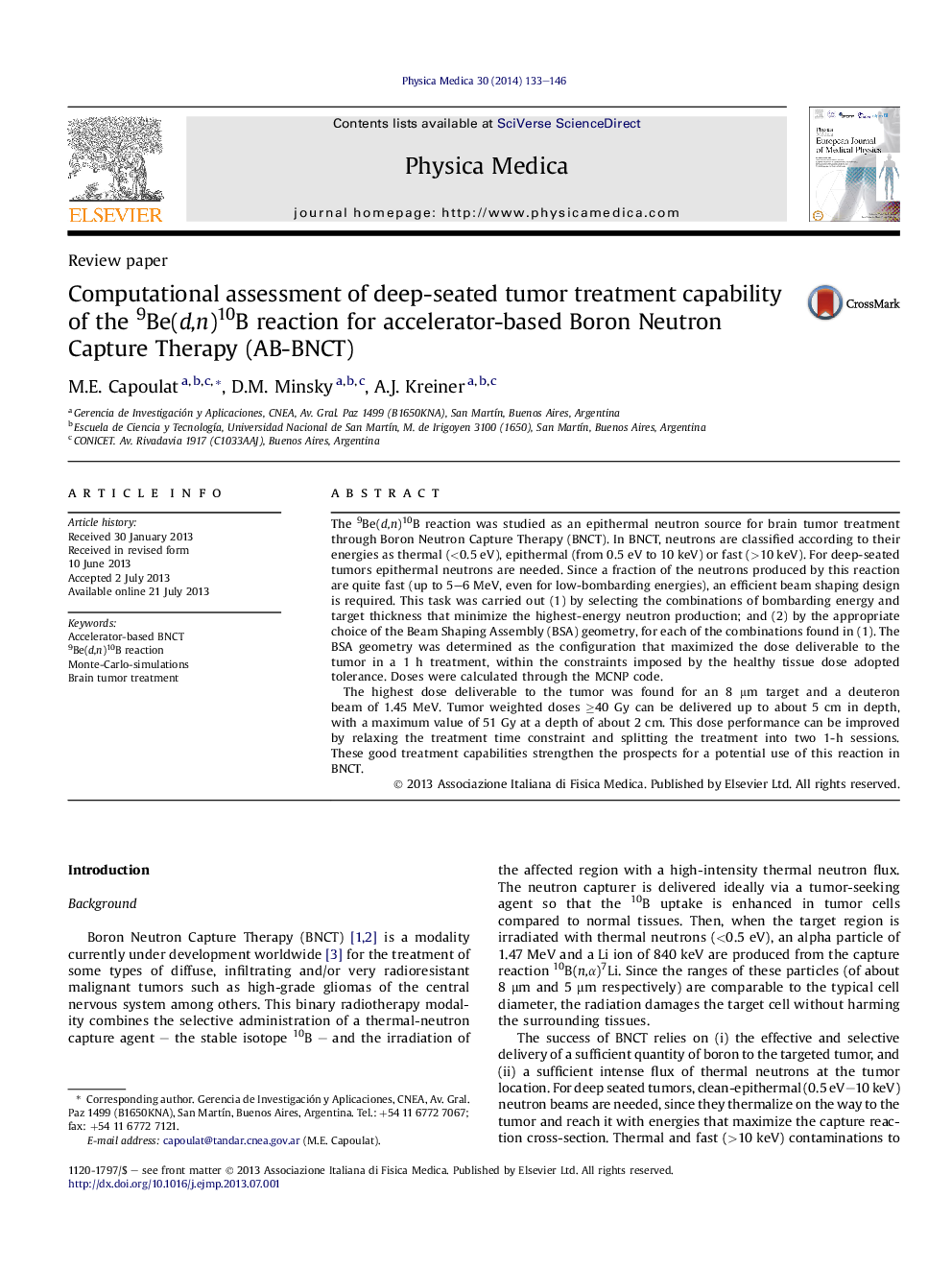| Article ID | Journal | Published Year | Pages | File Type |
|---|---|---|---|---|
| 1887247 | Physica Medica | 2014 | 14 Pages |
The 9Be(d,n)10B reaction was studied as an epithermal neutron source for brain tumor treatment through Boron Neutron Capture Therapy (BNCT). In BNCT, neutrons are classified according to their energies as thermal (<0.5 eV), epithermal (from 0.5 eV to 10 keV) or fast (>10 keV). For deep-seated tumors epithermal neutrons are needed. Since a fraction of the neutrons produced by this reaction are quite fast (up to 5–6 MeV, even for low-bombarding energies), an efficient beam shaping design is required. This task was carried out (1) by selecting the combinations of bombarding energy and target thickness that minimize the highest-energy neutron production; and (2) by the appropriate choice of the Beam Shaping Assembly (BSA) geometry, for each of the combinations found in (1). The BSA geometry was determined as the configuration that maximized the dose deliverable to the tumor in a 1 h treatment, within the constraints imposed by the healthy tissue dose adopted tolerance. Doses were calculated through the MCNP code.The highest dose deliverable to the tumor was found for an 8 μm target and a deuteron beam of 1.45 MeV. Tumor weighted doses ≥40 Gy can be delivered up to about 5 cm in depth, with a maximum value of 51 Gy at a depth of about 2 cm. This dose performance can be improved by relaxing the treatment time constraint and splitting the treatment into two 1-h sessions. These good treatment capabilities strengthen the prospects for a potential use of this reaction in BNCT.
